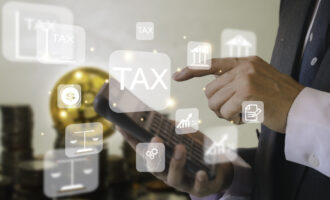Gavin Birchall, Tax Partner, looks at the new VAT reverse charge regime for the construction industry which finally became effective on the 1st March this year.
It is clear that the new VAT reverse charge regime represents a major change to the way in which construction related businesses account for VAT. The change will affect both contractors and sub-contractors and will impact all the way through the construction chain.
The change will in many cases shift the responsibility for collecting and accounting for VAT on to the customer rather than the supplier. Instead of the supplier collecting the VAT from the customer and paying this over to HMRC, the customer will pay over the VAT element to HMRC directly and will include it on their own VAT return as both ‘output’ and ‘input’ tax. This change is designed to combat VAT fraud which the Government perceives to be a major problem within the construction industry.
In what circumstances will the new rules apply?
The new rules will not apply in every case. They will be focused upon supplies of construction related services which would usually be subject to the Construction Industry Scheme and would ordinarily attract VAT at a 20% or 5% rate:-
- where the supplier and the customer of such supplies are both VAT registered businesses; and
- the customer is not an “end user” or “intermediary”. In other words, businesses or individual consumers who make onward supplies of building and construction related services
For example, a VAT registered plumber who invoices a VAT registered construction company for work performed will generally be subject to the new VAT reverse charge arrangement. The nature of the work carried out will be a construction related service and the construction company will not be an end user or intermediary because it will be making onward supplies of building and construction services.
In this scenario, the VAT registered plumber will issue an invoice to the construction company without adding VAT and the construction company will pay over the VAT directly to HMRC (whilst reclaiming the VAT as input tax) via its VAT return. The supplier (ie the VAT registered plumber) will need to make a note on the invoice to make it clear that the domestic reverse charge applies and that the customer is required to account for the VAT. The supplier must also state how much VAT is due under the reverse charge but without adding this to the amount charged to the customer.
There will be certain supplies which will be excepted from the new regime such as the installation of security systems, and the professional work of architects or surveyors or of building or engineering consultants. However, if any element of the work undertaken by a supplier includes work which would be caught by the new VAT reverse charge then the whole amount of the work invoiced will be subject to the new VAT reverse charge procedure.
In addition, the supply of VAT zero-rated construction services would not be subject to the VAT reverse charge procedure. Consequently, the VAT reverse charge regime would not apply to amounts invoiced in connection with the construction of new build houses. These should be invoiced in the same manner as was previously the case.
There will be a deminimus threshold of £1,000 so if the total amount invoiced between the supplier and the customer during a particular month does not exceed £1,000, the VAT reverse charge will not operate on the amount invoiced.
Supplies of construction services to customers who are not making onward construction related services themselves (ie an “end-user”) will not be affected by the VAT reverse charge rules.
Timing of the new rules
The new rules will apply if the tax point relating to the contract occurs on or after the 1 March 2021. This will generally mean that the new VAT reverse charge will apply to invoices raised on or after 1 March 2021. Consequently, the new rules are likely to impact upon new amounts invoiced under existing contracts. Any retentions may also be subject to the VAT reverse charge as the tax point for retentions under a contract is delayed until payment is received or a VAT invoice has been issued for it (whichever is earlier).
What action needs to be taken?
Businesses will need to ensure that they have procedures in place to determine whether the VAT reverse charge should be operated or whether the traditional method of VAT invoicing should be operated on a particular invoice.
These procedures should include:-
- verifying the VAT registered status of the supplier/customer (as applicable);
- checking the nature of the supplies made and the rate of VAT which applies; and
- obtaining confirmation from the customer that they are an end user/intermediary (if applicable)
Changes will also need to be made to the information included on invoices raised, and the way in which VAT returns are completed. For example, a customer which receives a service subject to the VAT reverse charge will need to account for the VAT in box 1 of the VAT return and recover it simultaneously on the same VAT return. Conversely, suppliers will not enter any output tax on sales to which the domestic reverse charge applies but will need to include the net value of the sale in their VAT return.







